Authors:
ABSTRACT
Aim
AIM To compare changes in pulpal chamber temperature during the visible-light curing of direct pulp capping
compounds and various modes of diode laser irradiation without prior placement of a pulp capping compound and the
resultant seals.
MATERIALS AND METHODS Pulp exposure holes were made in 100 extracted human primary first molars, which were
randomly assigned to ten equal groups. The holes were sealed by (a= Group 1, 2, 3, 4, 5, 6 and 7) different pulp capping
compounds which were cured using various types of visible-light curing units or (b=Group 8, 9 and 10) diode laser
irradiation without prior application of a pulp capping compound. Pulpal chamber temperatures were recorded during the
procedure, and the resultant seals were examined under a scanning electron microscope.
RESULTS Visible-light curing of the pulp capping compounds and diode laser irradiation at a 0.7 W output power can cause
non-injurious temperature rises in the pulpal chamber. At higher output powers of the diode laser, the temperature rises are
sufficient to cause thermal injury. The seals were complete when pulp capping compounds were used for direct pulp
capping, but were incomplete when laser irradiation without prior placement of a pulp capping compound was used for the
identical purpose.
CONCLUSION The visible-light curing of pulp capping compounds is not harmful to vital pulp, and provides an effective seal
of the pulp exposure hole. Laser irradiation is not an effective sealant, and can cause thermal injury to vital pulp at high
output powers.
PLUMX METRICS
Publication date:
Keywords:
Issue:
Vol.14 – n.2/2013
Page:
Publisher:
Cite:
Harvard: Y. Yilmaz, S. Keles, A. Mete (2013) "Temperature changes in the pulpal chamber and the sealing performance of various methods of direct pulp capping of primary teeth", European Journal of Paediatric Dentistry, 14(2), pp95-100. doi:
Copyright (c) 2021 Ariesdue

This work is licensed under a Creative Commons Attribution-NonCommercial 4.0 International License.
